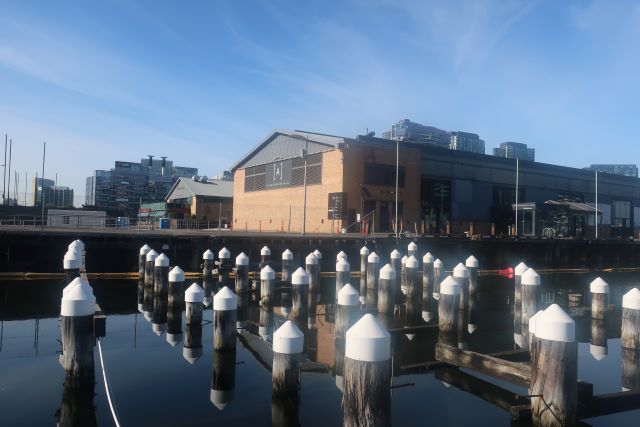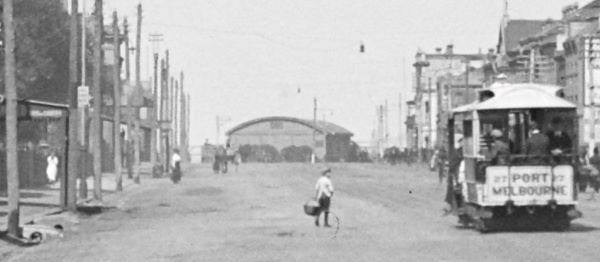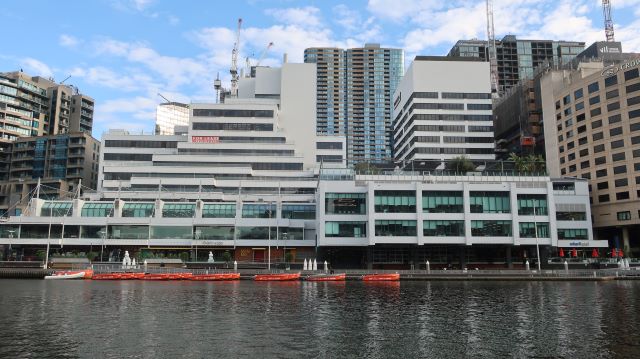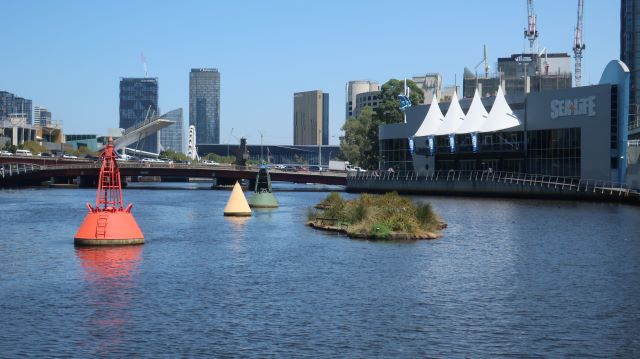
More pier stories
Continuing
Heritage Victoria require that Development Victoria prepare an interpretation plan as a condition of demolishing Central Pier in Docklands.
This week there has been extensive media coverage of silicosis, the debilitating lung disease caused by exposure to silica dust.
It brought back a memory about Central Pier.
About twenty years ago, Perce White, former Mayor and Councillor of Port Melbourne and a former waterside worker, told me that he would pick me up to attend a very important occasion. It was an instruction, rather than an invitation, and given gravely. I didn’t know what to expect. It was the launch of a mural painted on the eastern side of Shed 9 at Central Pier. The mural showed workers shovelling asbestos from the hold of a ship. No protective clothing. No masks. A speaker related the anguishing experience of her father who had died of mesothelioma. A union member spoke of those workers struggles to access compensation.
I am preoccupied with the by line of the National Cultural Policy, Revive, ‘a place for every story, and a story for every place’.
This is one of the stories of Central Pier which must not be lost to bland, generic interpretation.
Preparing for a walk, I have been investigating the history of Town Pier which used to be at the end of Bay St where the Port Melbourne Yacht Club is now.

A pier at the end of Bay St pre-dated Railway Pier (later Station Pier). It serviced importers in Melbourne as well as the large industries in Port Melbourne in the latter part of the 19th century. Imports were unloaded at Town Pier and transported by drays to their destinations. These industries depended on coal to power their operations, and that was unloaded at Town Pier in significant quantities regularly. Just to give one example: on 15 July 1889, The Era discharged 4,000 tons of coal from Newcastle, as reported in The Age. And The Era was just one of a succession of vessels bringing coal to power Port’s manufacturing establishments. Coal for the South Melbourne Gasworks was also unloaded at Town Pier and transported on a horse drawn tramway to the Gasworks where it was converted into town gas.
Over time Town Pier deteriorated. Superior facilities were offered at Victoria Dock and at Railway and Princes Piers, both connected to Melbourne and beyond by rail. In its declining years, Town Pier was used mainly for importing coal and kerosene.
Carters railed against the neglect of the Pier as their businesses had developed in association with Town Pier. They argued with the Railway Commissioners, the Melbourne Harbor Trust and anyone else who would receive their deputations for upgrading and extending the facilities at Town Pier. All to no avail.
Town Pier was also used for training by the Colonial and the early Australian Navy. It was a site of embarkation for, and return from, the First World War.
The deterioration of Town Pier accelerated and it was demolished in the late 1950s.
In the absence of interpretation, how can we know the story of this place?
Interpretation can be static such as an information pillar. Or it can invite curiousity like the ship names on the benches on Princes Pier.
And how have I been able to find these snippets to share with you?
By a quick search of Trove. Trove describes itself as ‘a single point of entry to a treasure trove of artefacts, curiosities and stories from Australia’s cultural, community and research institutions. Trove connects you to digital collections across Australia, including libraries, museums, galleries, the media, government and community organisations and more’.
Trove is part of Australia’s cultural infrastructure. It has democratised the study of history by making it accessible to everyone, not just professional historians.
Funding for Trove runs out at the end of June. The petition to parliament, which closed on 22 February, attracted 22,240 signatures.
Without Trove, how will we ‘tell the story of every place’?
Explore Trove
Cancer Council Silica dust
3 Comments
-
Anne Callaghan
I like that story about Perce's grave command to witness a real account of history. Non bland is grand.




Anon
Thank you Janet. particularly delighted that you utilized MY favourite cropped photo from Brendan Grainger of Town Pier's once connection with Bay Street, the cable tram network ( ferry Gem to Williamstown left from Town Pier) and, of course, PORT MELBOURNE.